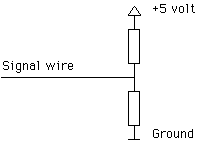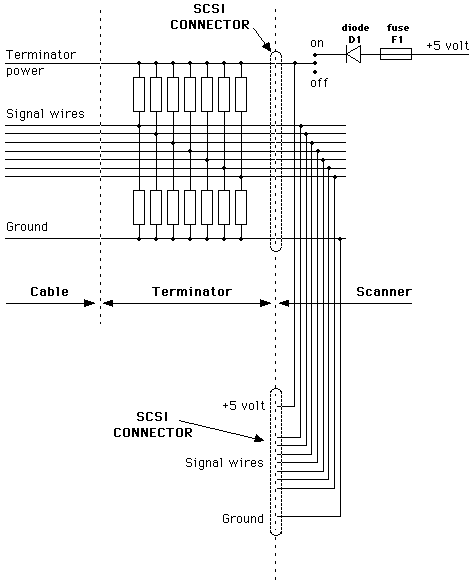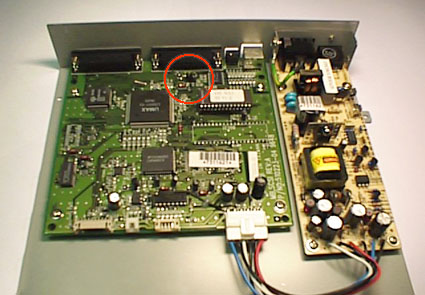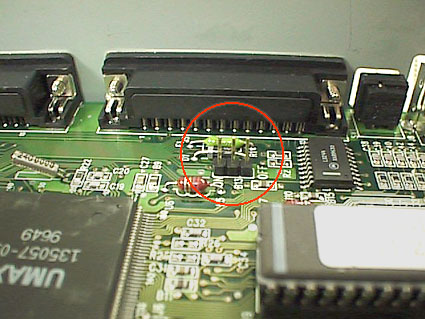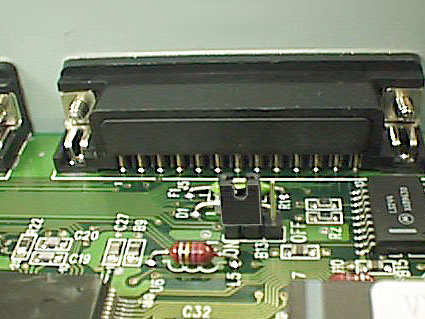UMAX Astra 600s & 1200s Termination Problems.
For some strange reason UMAX is persisting in not providing terminator power from it's scanners. In the Astra 600s and the 1200s, just like in most earlier models, this is again the case. We have notified UMAX of this fact and that we see it as an important problem. Their response is that they see no problem.
Read on to see why there is a problem and what you can do to solve it. Even if you don't have a UMAX read on to see that a SCSI bus is not so mysterious after all.
Scanners concerned: S6, S12, Astra 600s, Astra 1200s ans probably a few more.
What is a 'Terminator' anyway?
At both ends of a SCSI chain there has to be a terminator. This is an electronic component that dampens reflections in the signal. Without a terminator the signal would reflect right off the end of the cable and 'bounce' back. Somewhere along the cable the signal could not be read properly because one sees not only the signal itself but also a weaker and slightly delayed reflection.
You can see the mechanical equivalent in real life quite easily. Tie a piece of washing line a few metres long with one end to a metal hook firmly secured in the wall. Hold the other end and pull the line tight. Now 'code' a message by shaking the end you are holding up and down. The waves you make will travel down the line nicely. But as they reach the metal hook in the wall they will bounce right back. It will be hard or even impossible for someone to 'read' your message because the data you are sending is polluted by this reflection. Now we put a big sponge around the hook where the line attaches to it. You will see that the waves are absorbed by the sponge and there are no more reflections. And, surprisingly perhaps, although we are damping the signal it is actually easier to 'read' because there are no more reflection to confuse us.
